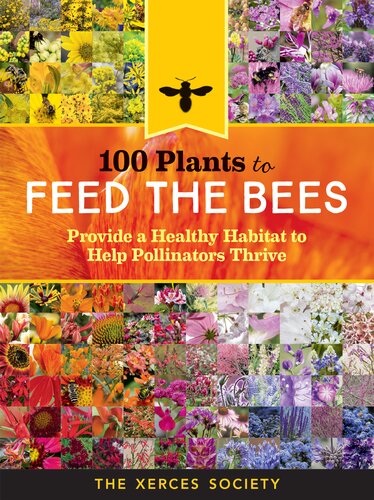

Most ebook files are in PDF format, so you can easily read them using various software such as Foxit Reader or directly on the Google Chrome browser.
Some ebook files are released by publishers in other formats such as .awz, .mobi, .epub, .fb2, etc. You may need to install specific software to read these formats on mobile/PC, such as Calibre.
Please read the tutorial at this link. https://ebooknice.com/page/post?id=faq
We offer FREE conversion to the popular formats you request; however, this may take some time. Therefore, right after payment, please email us, and we will try to provide the service as quickly as possible.
For some exceptional file formats or broken links (if any), please refrain from opening any disputes. Instead, email us first, and we will try to assist within a maximum of 6 hours.
EbookNice Team

Status:
Available0.0
0 reviewsBack cover
Plant for pollinators The first simple step toward protecting our pollinators is to provide the flowers they need, using no pesticides. With abundant native wildflowers, your task is even simpler: don't mow them down! This field guide identifies the plants that honey bees and native bees – as well as butterflies, moths, and hummingbirds – find most nutritious, including flowers, trees, shrubs, herbs, and pasture plants. With guidance from the Xerces Society, the global authority on insects and other invertebrates, you can turn your backyard, farm, or commumity into a thriving pollinator habitat.
Each plant profile includes which pollinators visit the plant, the quality of honey the nectar produces, when it blooms, how best to use it in the landscape, planting tips, and spectacular photography.
2017 GWA Media Awards Silver Medal winner
“A wonderful and much-needed book that will inspire and inform the creation of bee-friendly wildflower gardens. Perhaps we can turn our gardens, neighborhoods, towns, and cities into vast, colorful havens for bees, butterflies, and other vital insects!” — Dave Goulson, biologist, founder of the Bumblebee Conservation Trust, and author of A Sting in the Tale
Tags: Developmental Biology | Nature Conservation | Refer